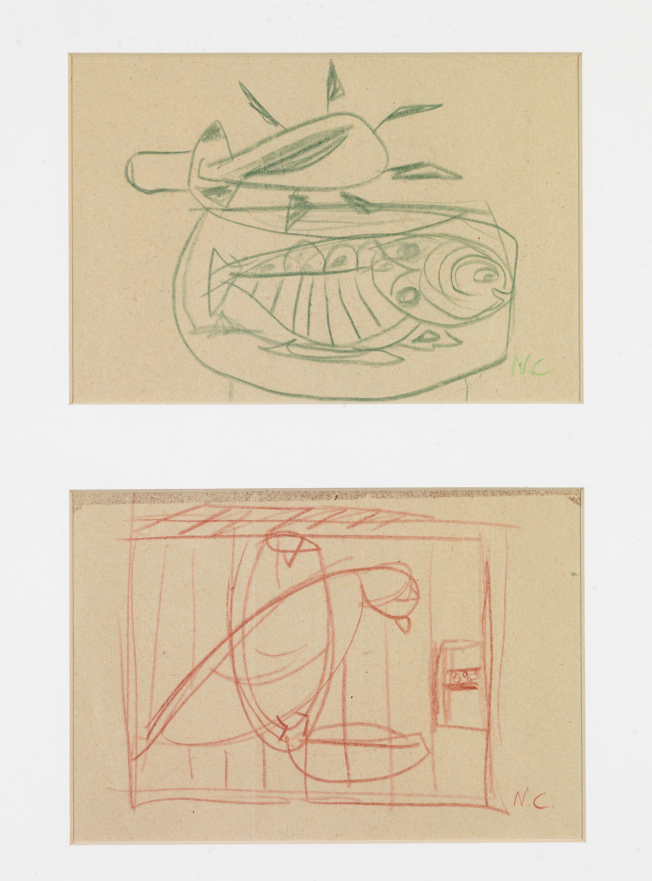Untitled

Born 1924 in Thessaloniki; died 1989. Studied law and economics at the Aristotle University of Thessaloniki, painting under Polyklitos Rengos and Roy Moyer, and engraving under George Perret. Elected professor of freehand drawing in the Faculty of Technology, Aristotle University, Thessaloniki 1970, where he taught freehand drawing, painting, graphic arts, and stage-design until his death in 1989. Held 15 solo exhibitions and showed his work in many group exhibitions in Greece and abroad. Represented Greece at the Alexandria Biennale in 1976.
Retrospectives of his work were held in the Vafopoulos Cultural Centre, Thessaloniki, 1985, and in the Municipal Art Gallery and the Art Gallery of the Society for Macedonian Studies, Thessaloniki, 1990. As well as painting, also illustrated books and designed publicity brochures and posters. In 1962, his poster for the 50th anniversary of the liberation of Thessaloniki was awarded first prize in the competition. Also worked as a stage-designer and costume-designer with the State Theatre of Northern Greece and various independent drama groups. Wrote articles on art for newspapers and periodicals.
Sahinis began his career by experimenting with his style and his media, his subjects being mainly still lifes, portraits, landscapes, and nudes. By 1950, he had started to use paper as a medium on a par with paint, and was producing his first collages. There followed a number of semi-abstract, highly stylised compositions, and the transition to abstract art was complete by 1960. He frequently took his stimuli from his immediate environment, and the objects that he either painted or incorporated wholly or partially into his works are very often familiar objects bearing the marks of time or of human contact and transmuted into visual art media. The Dictatorship brought about a radical change in Sahinis's visual language, which was his way of protesting against, and commenting on, the current situation in Greece. During that period, he also refused to take part in the Venice Biennale.
Sahinis then tried out a new technique, projecting drawings he had made and printing them on light-sensitive cloth, and completing the compositions with collage and paint. After several months spent in Europe in 1982-3 he was influenced by Neo-Expressionism. He started to produce larger works, his colours now frequently pure and unmixed. The works from this period, until his death, ally the painter's experience and maturity with a dreamy mood, tempered by the aggressiveness of the colour.





